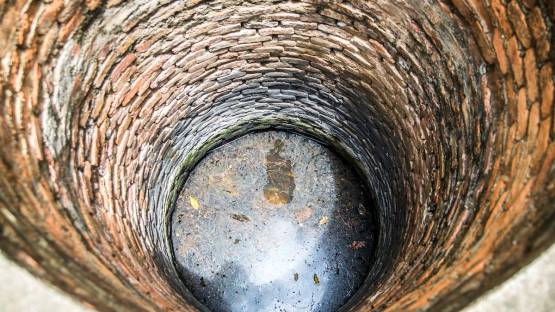The IAEA invites research organizations to join its new Coordinated Research Project (CRP) focussed on the combined use of environmental water, gaseous and pollutant isotope tracers to better understand the vulnerability to pollution of shallow aquifer systems. The four-year project is aimed at leading to a better pollution vulnerability assessment and consequently implementation of mitigation strategies.
Groundwater is an essential water source of the planet, global utilization has doubled since 1960, and now supplies approximately 43% of global irrigation water as well as domestic water for over half of the world's population. In arid countries, groundwater use is even more intensive, with around 80% of the population either partially or totally dependent on groundwater. However, the availability and quality of groundwater resources are increasingly threatened by both natural and anthropogenic pressures. Groundwater can be rendered unusable for both domestic and agricultural purposes, for example through nutrient and pesticide contamination derived from agricultural practices.
Groundwater contamination though can vary spatially and temporally depending on the input loads, the underlying geology, groundwater recharge, flow paths and residence times. Therefore, an improved assessment of aquifer contamination vulnerability requires a multifaceted characterization approach in order to properly constrain the system complexity controlling contaminant behaviour in aquifers. This complexity differs depending on whether the saturated or unsaturated zone is being considered.
The unsaturated zone plays a fundamental role for nonpoint source pollution. A pollutant such as nitrate (NO3), for example, passes through the unsaturated zone and reaches the groundwater table with the seepage water. Industrial contaminants on the other hand are often introduced directly into the saturated zone. The residence times for various pollutants within the system can differ significantly, depending on whether the pollutant enters the subsurface via the saturated or the unsaturated zone. The estimation of residence time in the unsaturated and saturated zones is therefore a fundamental requirement in groundwater quality management.
Understanding the timescales for aquifers, from years to decades, is gained from the use of environmental tracer data. Different tracers show different residence times due to their different transport mechanisms especially in the unsaturated zone. While tritium (3H) moves through the unsaturated and saturated zones as “ordinary” water, gas tracers, such as 3H/3He, noble gases and CFCs, pass the unsaturated zone undergoing different processes, “seeing” the saturated zone only. Depending on the properties of the unsaturated zone (hydraulic properties, thickness) this difference in behaviour can be successfully used to separate the subsurface transport process into the unsaturated and the saturated parts.
CRP Objectives
The main focus of the CRP will be assessment of the usefulness and relevance of the combined use of water and gaseous tracers in recharge and vulnerability studies in shallow aquifer systems. The intention is to examine an integrated approach of tracers including 3H, 3He, other noble gases and pollutant specific isotopic signatures or concentrations to produce refined groundwater recharge and vulnerability to pollution assessments.
The use of such isotopes is key in hydrological modelling validation for groundwater vulnerability mapping purposes. The various models that are in use, such as LPM (lumped parameter models), 3D hydrogeological flow and transport modelling, the use of machine learning techniques, as well as advanced spatial analysis tools, each have their specific challenges and limitations. Thus, the aim is to identify the right tool kit and to produce refined maps of groundwater vulnerability to pollution for specific environmental contexts, and to develop the methodological approach for a wider adoption in Member States.
More specifically, the project is aimed at
- Improving the integrated use of water, gaseous, and dissolved isotopes for residence time estimation in shallow aquifers,
- Assessing the role and contribution of the unsaturated zone in pollution transport and improve the interpretation of hydrological processes in shallow aquifers,
- Contributing to the development, calibration, and application of numerical models for more accurate groundwater pollution risk mapping.
How to join this CRP
Research organizations interested in joining the CRP must submit their Proposal for a Research Contract or Agreement by email, no later than 14 July 2023, to the IAEA’s Research Contracts Administration Section, using the appropriate template on the Coordinated Research Activities web site. Same template can be used for both research contract and technical contract. The IAEA encourages institutes to involve, to the extent possible, female researchers and young researchers in their proposals. For further information related to this CRP, potential applicants should use the contact form under the CRP page.






